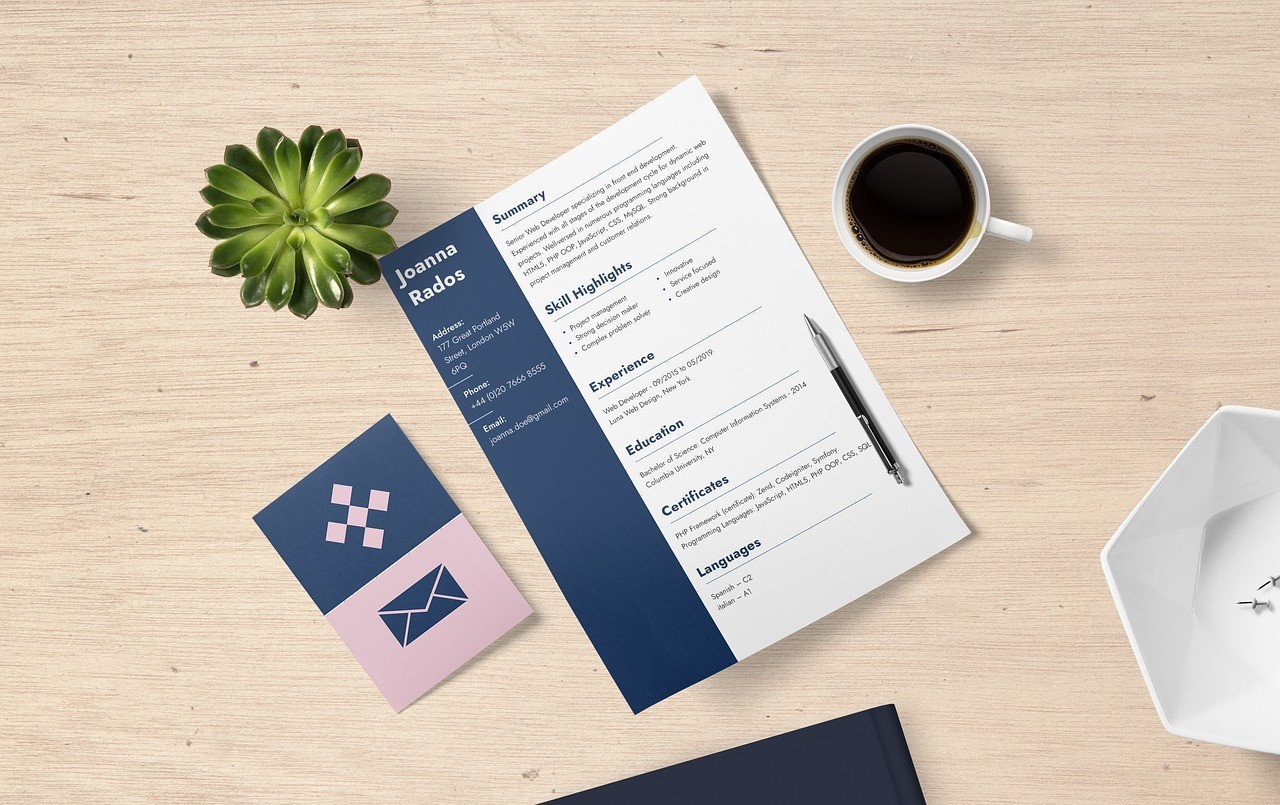Creating a resume is a crucial step in your career journey, and doing it right can significantly boost your success.
This article is your guide to crafting a standout resume, offering practical tips and insights to help you effectively communicate your qualifications and increase your chances of career success.
Let’s dive in and create a resume that gets noticed by employers.

Resume Basics
Before crafting your winning resume, highlight the key sections to make it stand out to potential employers.
- Contact Information: Your contact details are the gateway for employers to contact you. Ensure they are accurate and up-to-date.
- Summary or Objective Statement: This section provides a snapshot of your career goals and what you bring.
- Work Experience: Detail your past job roles, responsibilities, and accomplishments to demonstrate your expertise.
- Education: Highlight your educational background, including degrees, institutions, and relevant coursework.
- Skills: List your essential skills and competencies relevant to the job you’re applying for.
- Additional Sections: Depending on your experience, you may include sections for certifications, volunteer work, or other relevant information.
Formatting and Content
Ensuring the proper formatting and content in your resume is crucial. It’s the first impression you make on potential employers. Here’s a concise list to guide you:
- Clean and Readable Template: Start with a clean, professional template that’s easy on the eyes.
- Font Choice: Opt for standard, readable fonts like Arial, Calibri, or Times New Roman. Maintain a consistent font size (11-12 points).
- White Space: Use ample white space to improve readability. Avoid clutter and ensure a balanced layout.
- Headings and Subheadings: Employ clear headings and subheadings to separate different sections.
- Bullet Points: Utilize bullet points to list accomplishments and responsibilities within each job role.
- Bold and Italics: Use bold fonts for headings and italics for emphasis, sparingly.
- Alignment: Maintain consistent alignment (typically left-aligned) for your text.
- Length: Keep your resume concise, ideally one page for less experienced candidates and two pages for those with extensive experience.
- File Format: Save your resume as a PDF to ensure it retains its formatting across different devices and systems.
- Content Relevance: Tailor your content to the job you’re applying for, focusing on relevant skills and experiences.
A well-formatted resume enhances readability and makes a positive impression on recruiters. Combine these formatting and content guidelines to create a visually appealing and effective resume.
Tailoring Your Resume
Tailoring your resume is the key to making a solid impression on potential employers. It’s about customizing your document to match the specific job you’re applying for. Here’s a concise guide to help you tailor your resume effectively:
- Keywords from Job Description: Identify and incorporate relevant keywords from the job description to align with the employer’s expectations.
- Relevant Skills and Experiences: Highlight skills, qualifications, and experiences directly related to the job requirements.
- Quantify Achievements: Whenever possible, use quantifiable metrics to showcase your accomplishments.
- Prioritize Information: Place the most relevant and impressive information near the top of your resume to grab the recruiter’s attention.
- Adjust Language: Modify the language of your resume to match the tone and terminology used in the industry or company.
Customizing your resume in these ways ensures that it not only meets but exceeds the expectations of potential employers, increasing your chances of landing your desired job.
Proofreading and Editing
Proofreading and editing your resume are essential to ensure it’s error-free and polished and makes a strong impression on potential employers. Here’s a concise guide to help you in this crucial process:
- Spelling and Grammar: Carefully review your resume for spelling and grammatical errors, as even minor mistakes can detract from your professionalism.
- Clarity and Conciseness: Eliminate unnecessary jargon and ensure your content is clear, concise, and easy to understand.
- Consistency: Check for consistent formatting, such as font styles, bullet points, and headings throughout your resume.
- Relevance: Remove any information not directly related to the job you’re applying for, keeping the content focused.
- Ask for Feedback: Consider seeking feedback from trusted peers or mentors to gain additional perspectives and catch any overlooked errors.
- Formatting Check: Verify that your resume’s formatting remains intact, especially when saving or sending it in different file formats.
- Final Proofread: Conduct a final proofread to catch any lingering errors before submitting your resume.
Adding a Personal Touch
Adding a personal touch to your resume can set you apart from other applicants and make a memorable impression on potential employers. Here’s a concise guide on how to infuse your resume with a personal touch:
- Professional Summary: Start with a well-crafted professional summary or objective statement that briefly highlights your unique skills and career goals.
- Customize Your Content: Tailor your resume for each job application, emphasizing the skills and experiences that align with the specific role.
- Show Your Personality: While maintaining professionalism, allow your unique personality and enthusiasm for the job to shine through in your resume’s tone and language.
- Achievements and Impact: Highlight your significant achievements and the impact you’ve made in your previous roles to showcase your value to potential employers.
- Use Metrics: Whenever possible, use quantifiable metrics to demonstrate your accomplishments and contributions.
- Showcase Passion Projects: Include relevant passion projects or side ventures demonstrating your commitment and interest in the field.
- Include a Cover Letter: Complement your resume with a personalized cover letter that further conveys your enthusiasm for the position.

Choosing the Right Resume Type
Choosing the right resume type is a crucial decision in crafting an effective resume. Your choice should align with your career history and the job you’re applying for. Here’s a concise guide to help you select the appropriate resume type:
Chronological Resume:
- Ideal for those with a consistent work history
- Lists work experience in reverse chronological order
- Highlights career progression and growth
Functional Resume:
- Suited for individuals with employment gaps or changing careers
- Focuses on skills and qualifications rather than a strict chronological work history
- Showcases relevant skills and accomplishments
Combination Resume (Hybrid):
- Blends elements of both chronological and functional resumes
- Emphasizes skills and qualifications while including a work history section
- Applicable for applicants with a mix of skills and experience
Targeted Resume:
- Customized for a specific job or industry
- Tailors the resume’s content to match the requirements of a particular position
- Maximizes relevance and impact
Creative Resume:
- Allows for more visually appealing and unconventional designs
- Suitable for creative fields like graphic design or marketing
- Must still prioritize clarity and readability
Digital/Online Resume:
- Designed for online applications and digital portfolios
- May include multimedia elements like links to work samples or projects
- Ensures easy online accessibility
Professional Resume Writing Services
When seeking professional resume writing services, it’s crucial to choose one that aligns with your career goals and needs. Here are seven reputable options to consider:
- TopResume: Known for its personalized approach and experienced team of writers.
- ResumeSpice: Offers tailored resume writing, cover letter, and LinkedIn profile services.
- CraftResumes: Provides professional resume writing for various industries and career levels.
- ResumesPlanet: Specializes in crafting resumes, CVs, and cover letters for job seekers.
- ResumeWriters.com: Features certified professional resume writers and a satisfaction guarantee.
- Monster Resume Services: Offers resume writing, LinkedIn profile optimization, and career coaching.
- ResumeProfessionalWriters: Specializes in resumes, CVs, and federal resumes, backed by a team of experts.
Conclusion
In conclusion, by applying the tips from this guide, you can create a compelling resume that enhances your chances of career success.
Tailor your resume, focus on formatting and content, add a personal touch, and proofread carefully to present yourself effectively to potential employers. Good luck in your job search!









